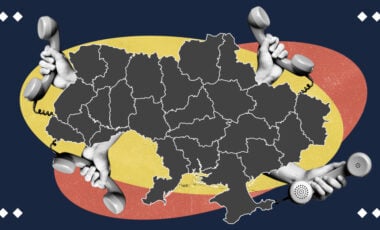Green revival: How former reservoir of Kakhovka changed in two months after dam explosion

Part of the river on the Kamianska Sich National Nature Park territory is covered with meadow plants. Source: Serhii Skoryk
After the Russian forces blew up the Kakhovka Dam and the catastrophic consequences that this led to — one of them being the depletion of the reservoir — environmentalists began to sow the bare bottom of the Kakhovka Reservoir. The first results are impressive: 1,700 hectares of land have already been covered with vegetation.
After the Kakhovka dam explosion, ecologists discussed the need to sow the bare bottom of the reservoir with various types of grass to prevent it from drying out and further blowing the sand into the air with all the harmful substances.

Part of the river on the Kamianska Sich National Nature Park territory, near the village of Novokairy, is covered with meadow plants. Source: Serhii Skoryk
This is precisely what they did in the Kamianska Sich National Nature Park, which lies along the territory of the Kakhovska Reservoir. The area adjacent to the park was planted with various herbs after the disaster. For one of Rubryka's previous articles, the director of the national park, Serhii Skoryk, told us:
"All the workers collected annual seeds at the field for seven days. They germinate quickly, and you can see what will be on the ground for the next year. Maybe it will be another project, or we will repeat it."


Pay attention to the "sleeve" near the village of Novokairy. This is part of the reservoir that the Kamianska Sich employees planted with grass on June 20 (first photo) and August 17, 2022 (second photo) after the vegetation covered the bare bottom.
Now, the work of environmentalists has produced its first results. Serhii Skoryk told Rubryka that the vegetation covering the bottom of the reservoir is typical for the region. The bottom of the former Kakhovka Reservoir is covered with clover, alfalfa, and other plants. Moreover, not only the areas that environmentalists planted are overgrown. Serhii Skoryk told us that 1,700 hectares of the bare bottom of the reservoir are already covered with vegetation.

Part of the river, located on the Kamianska Sich National Nature Park territory, is covered with meadow plants. Source: Serhii Skoryk
The grass cover will solve three problems: prevent soil erosion, preserve moisture, and prevent the wind from raising dangerous dust.
Now, new ecosystems are forming in these territories. They can become a home for many species of mammals, birds, and insects, but only after the end of hostilities on the territory:
"There are explosions here every day. Do you think birds will settle here under such conditions?" Skoryk comments.
When the hostilities stop, birds will reappear on the territory, but if the hydroelectric power plant is restored, these ecosystems may be destroyed. Ecologists are against restoring the Kakhovka plant and offer many counter-arguments for such reconstruction. Read more about it here.

Part of the river, located on the Kamianska Sich National Nature Park territory, is covered with meadow plants. Source: Serhii Skoryk
Earlier, the Ministry of Internal Affairs stated that the Kakhovka power plant cannot be restored, and the main threat remains with the situation around the Zaporizhzhia Nuclear Power Plant.





















































